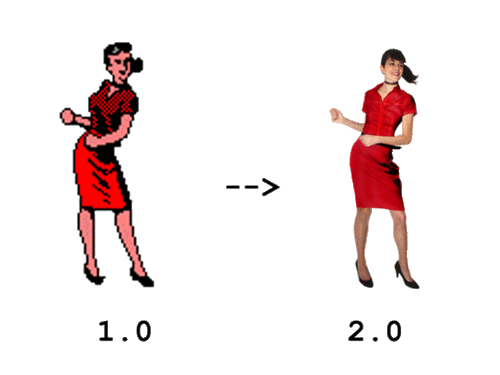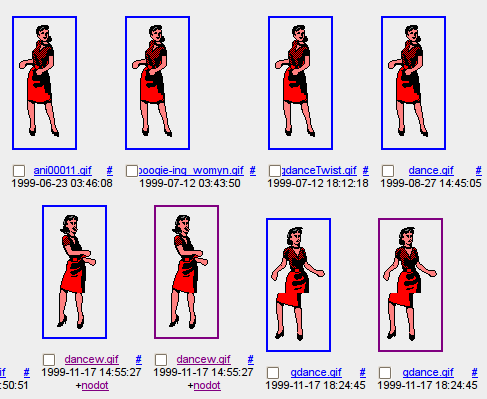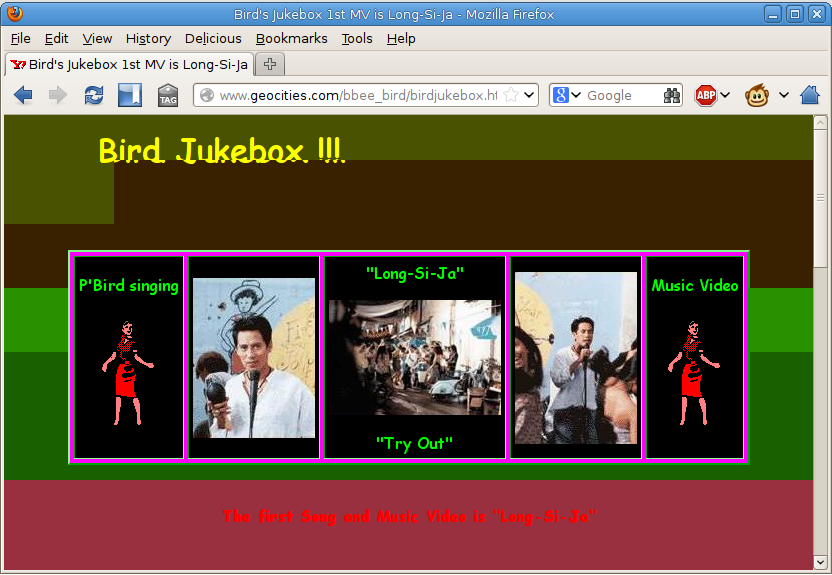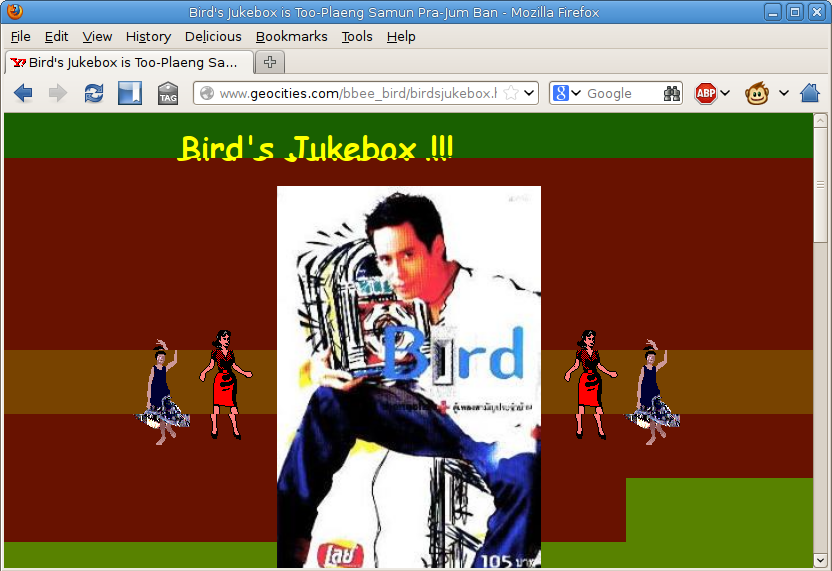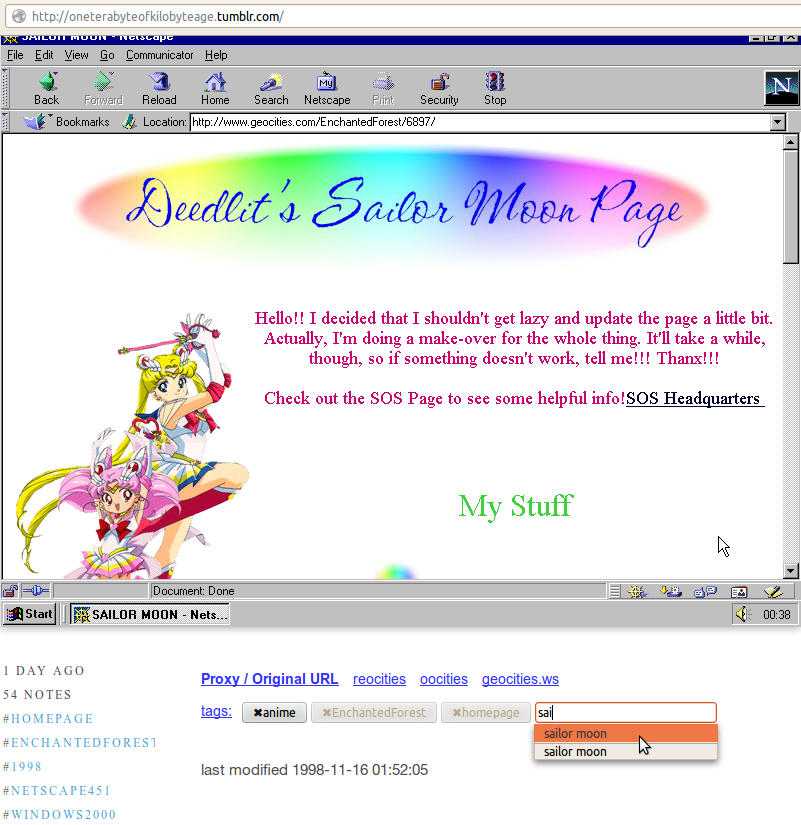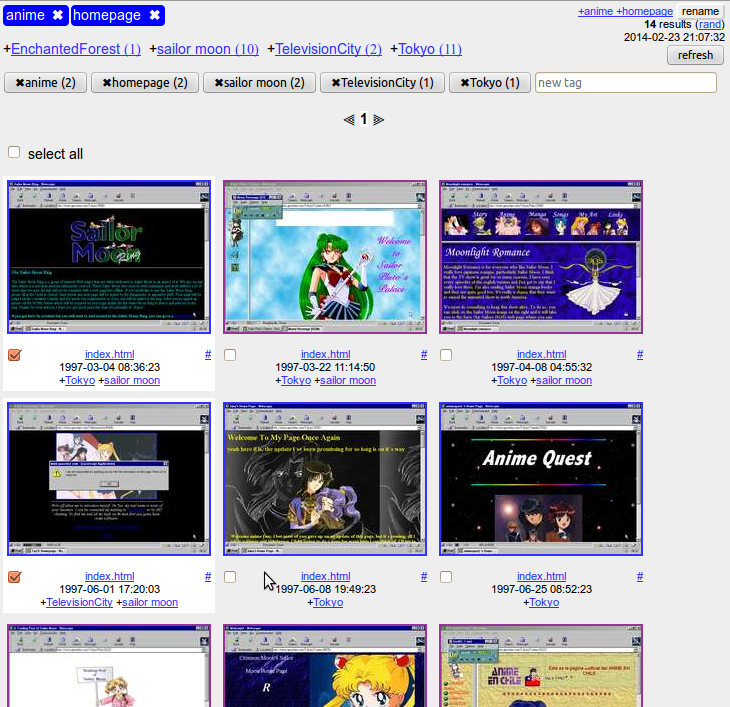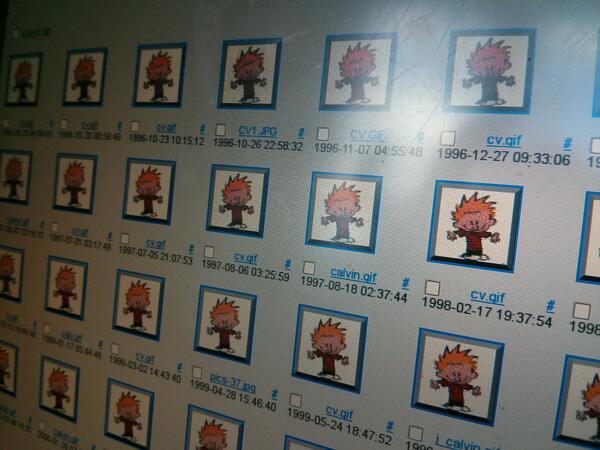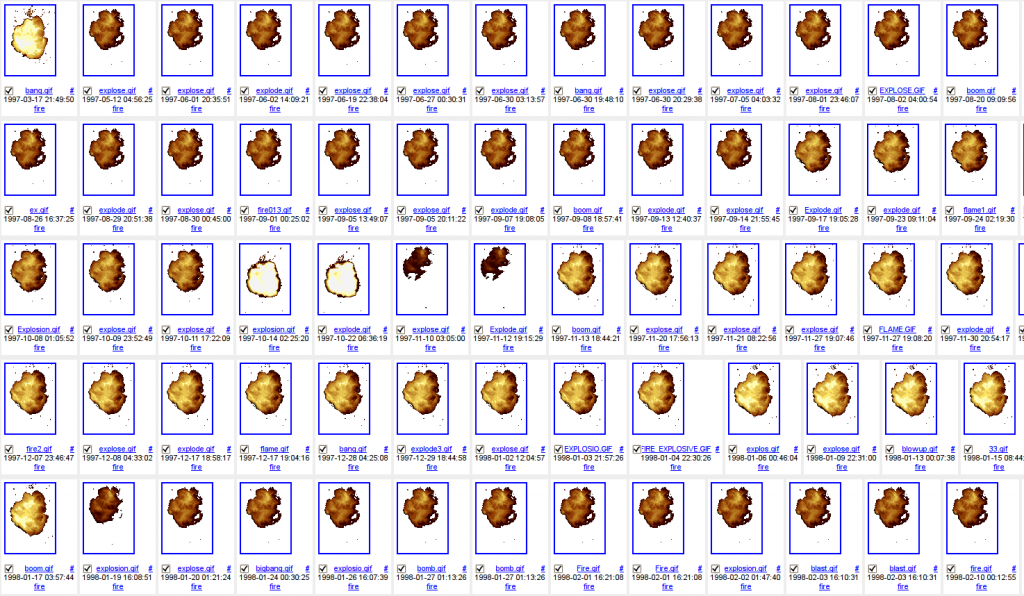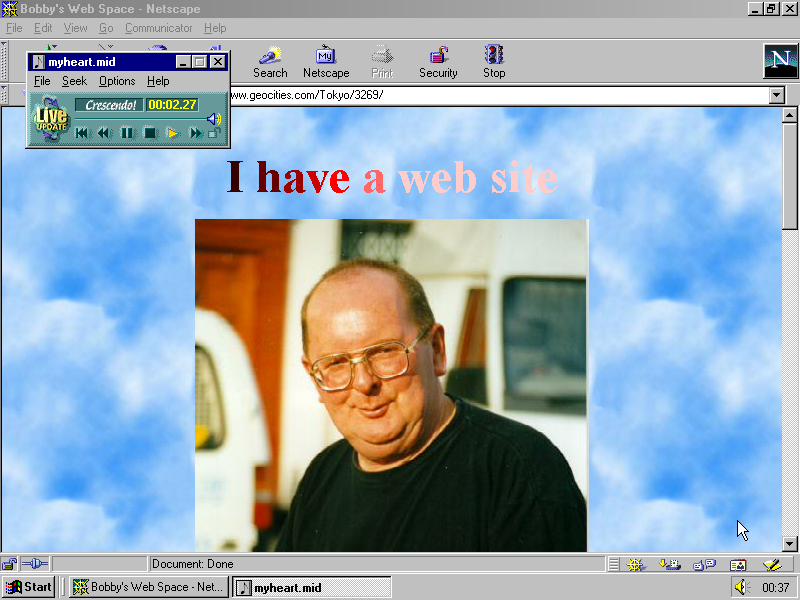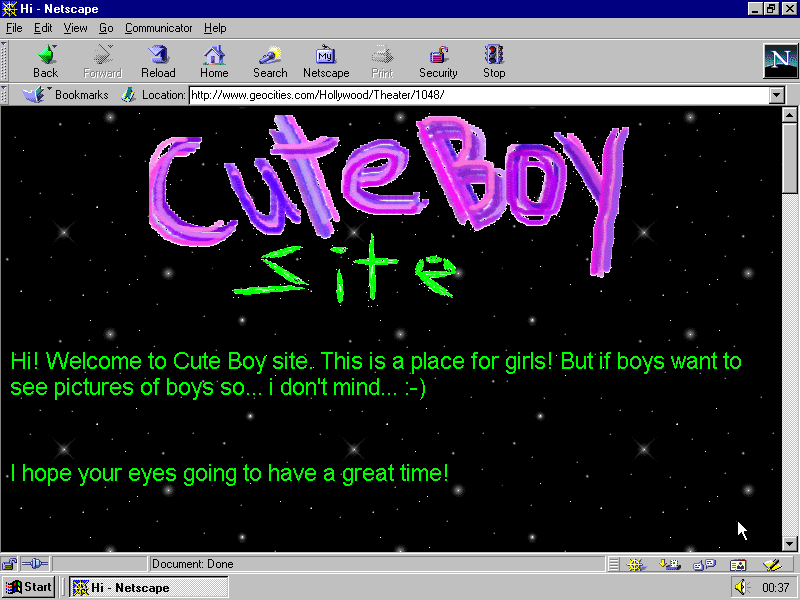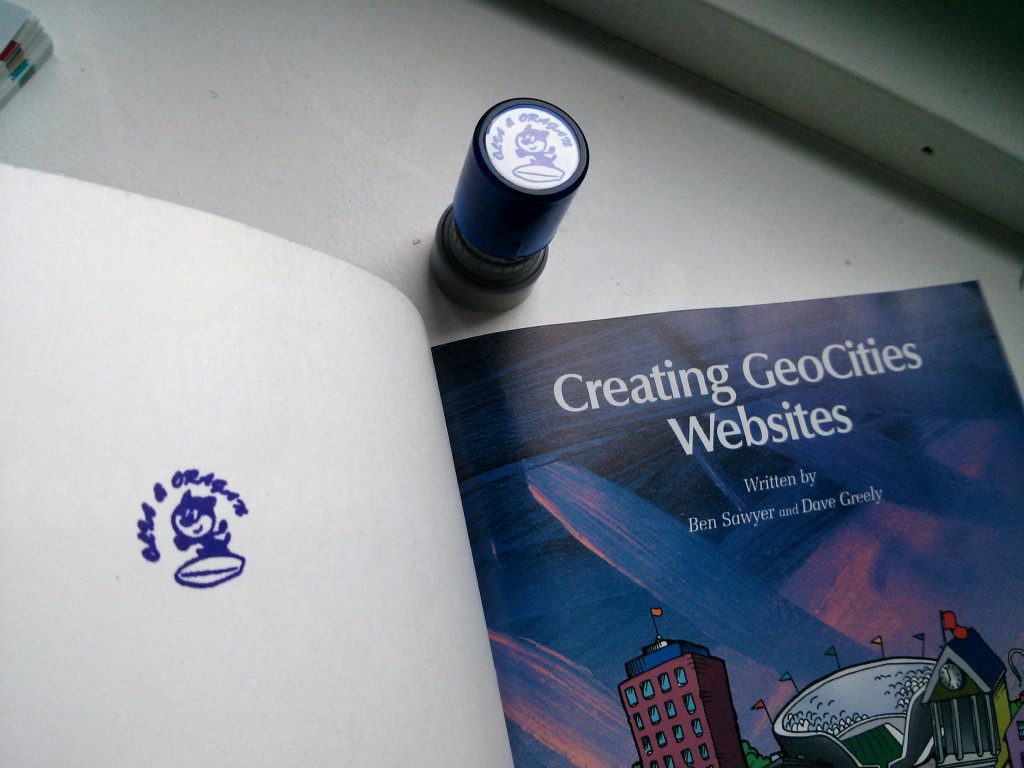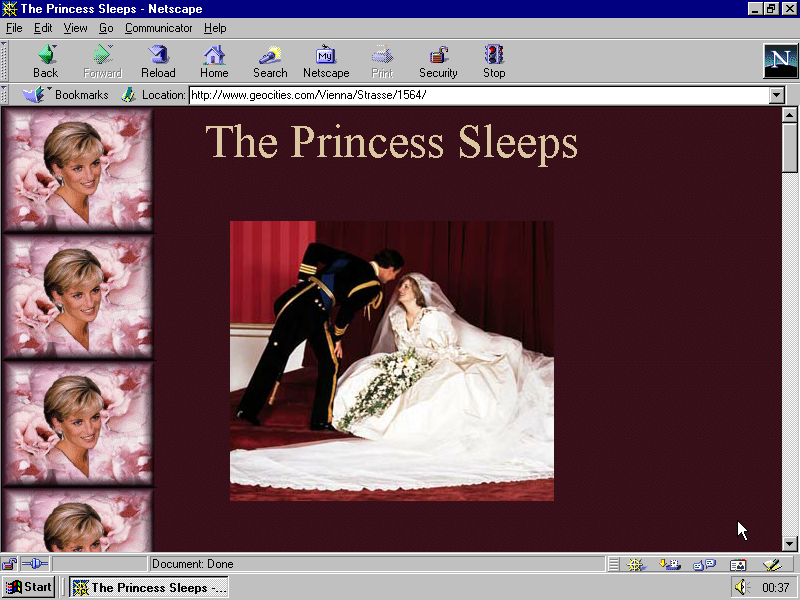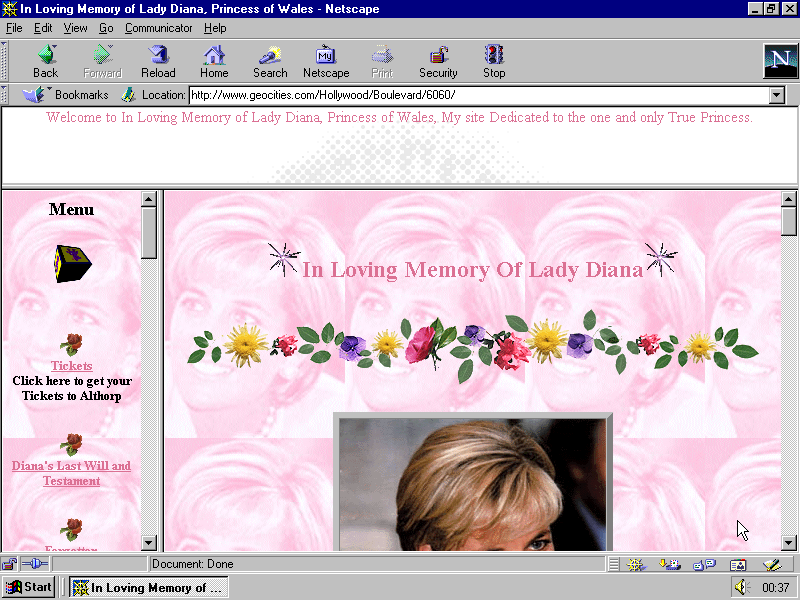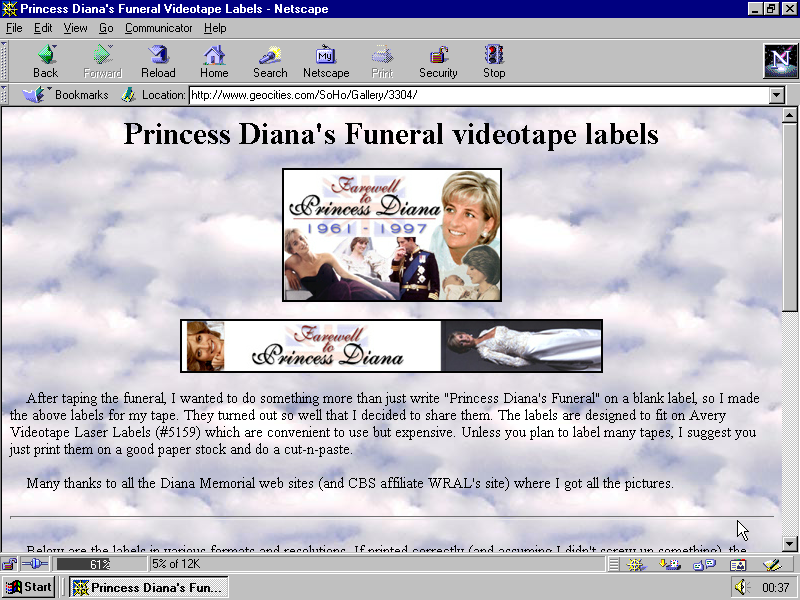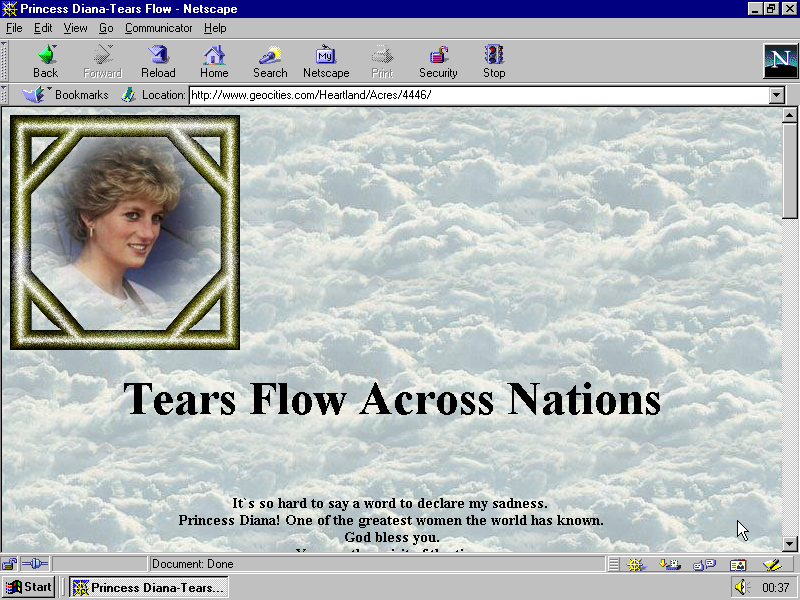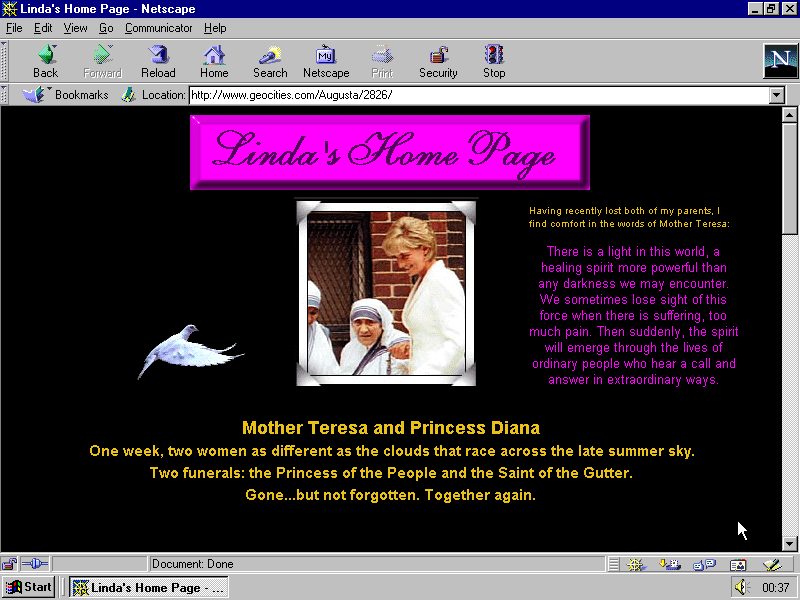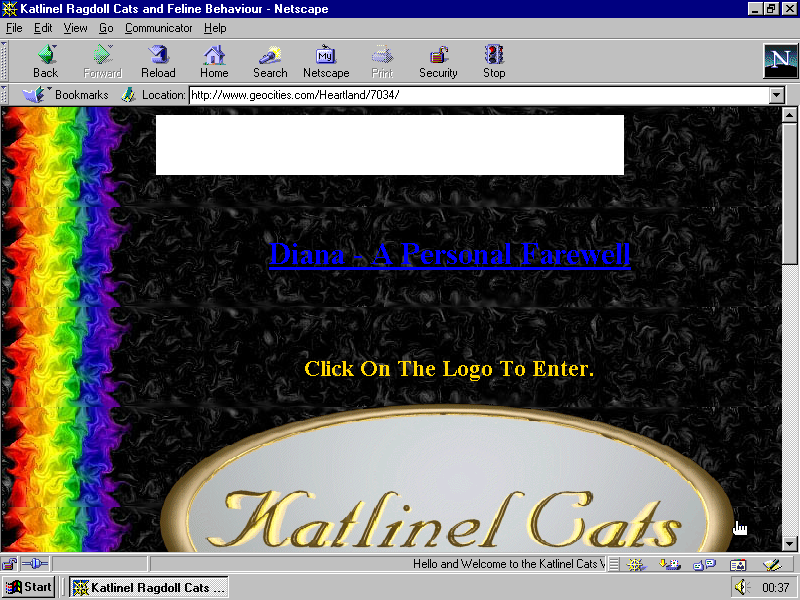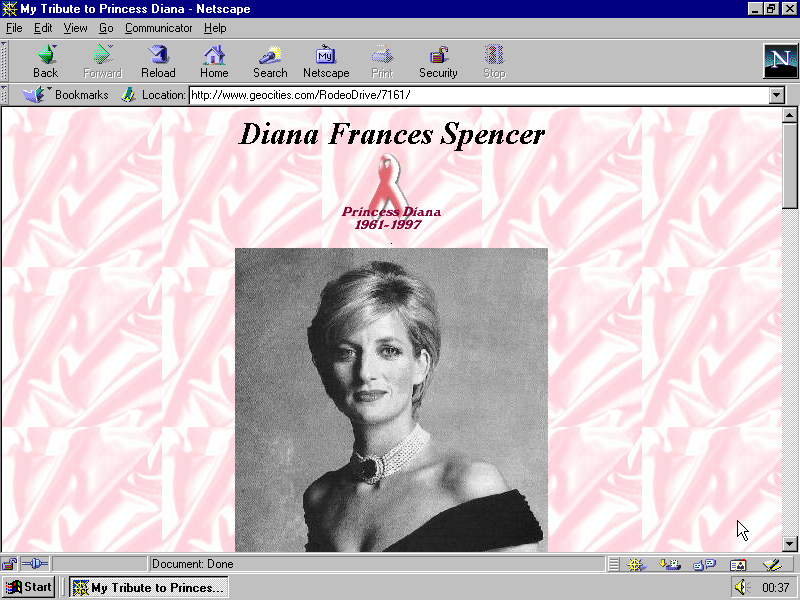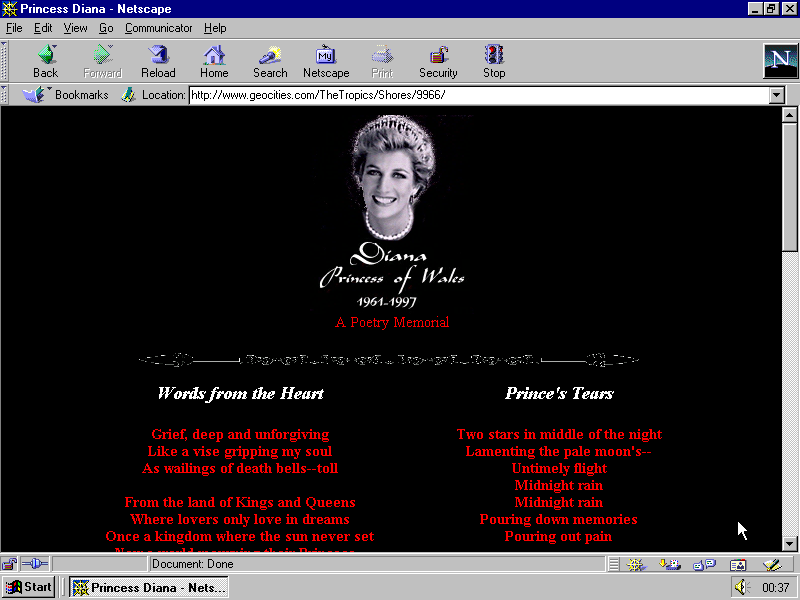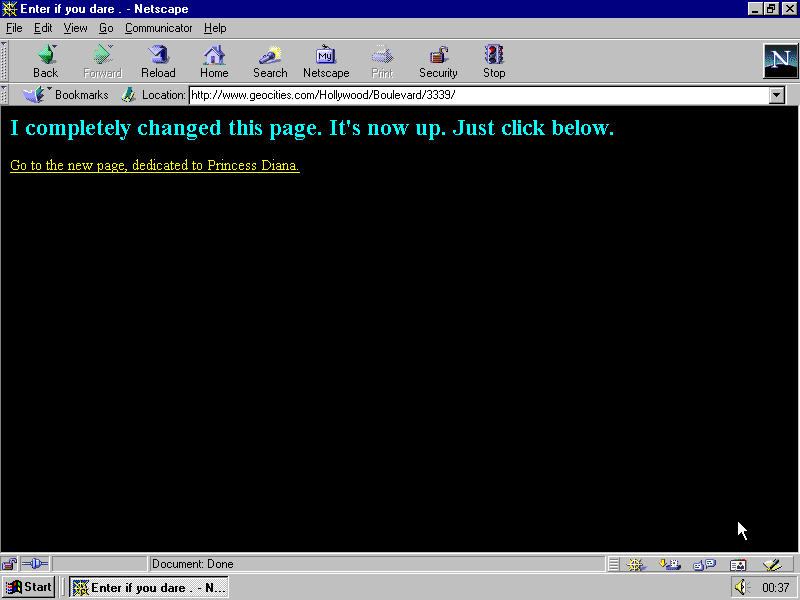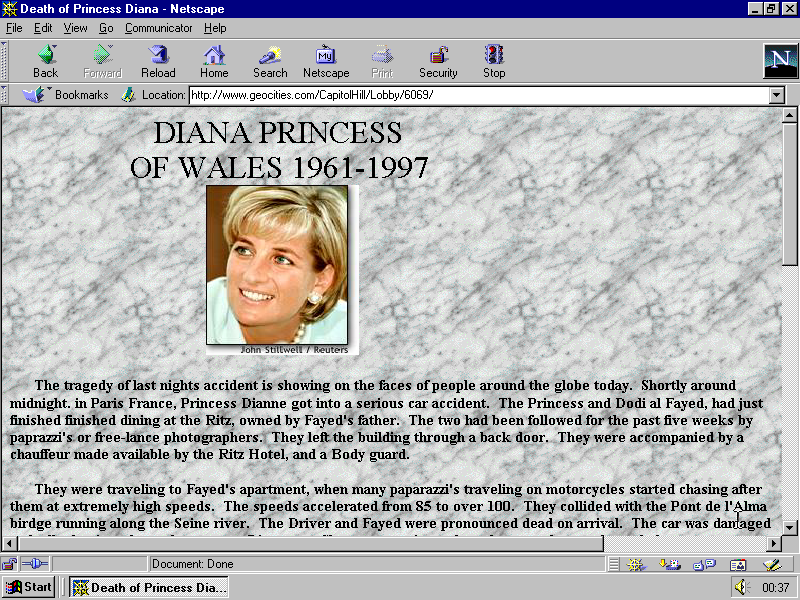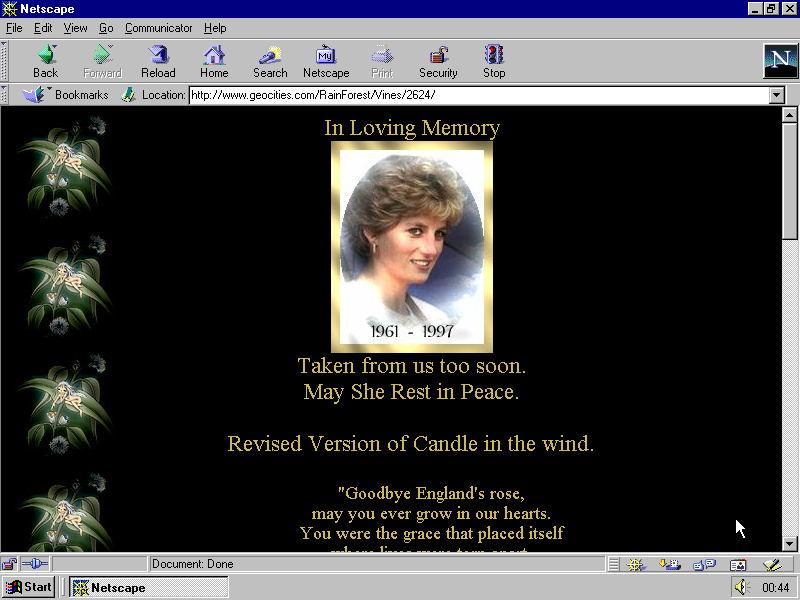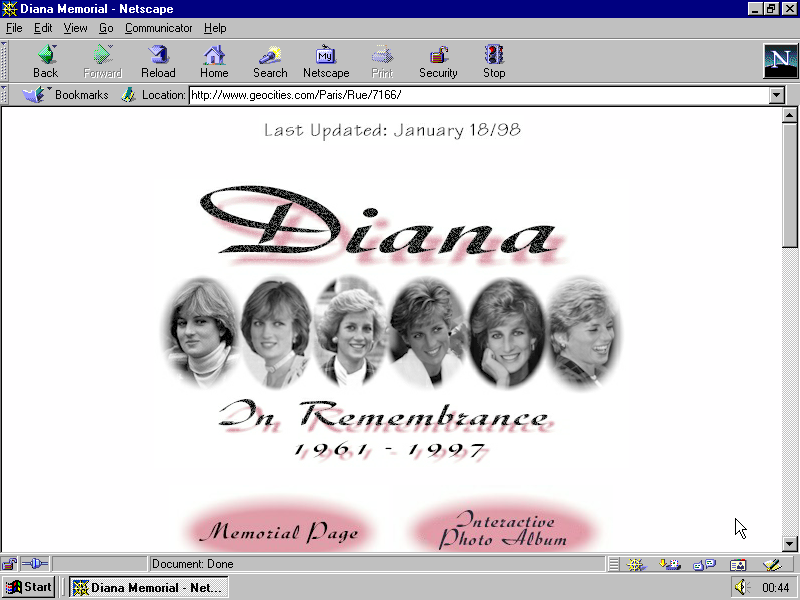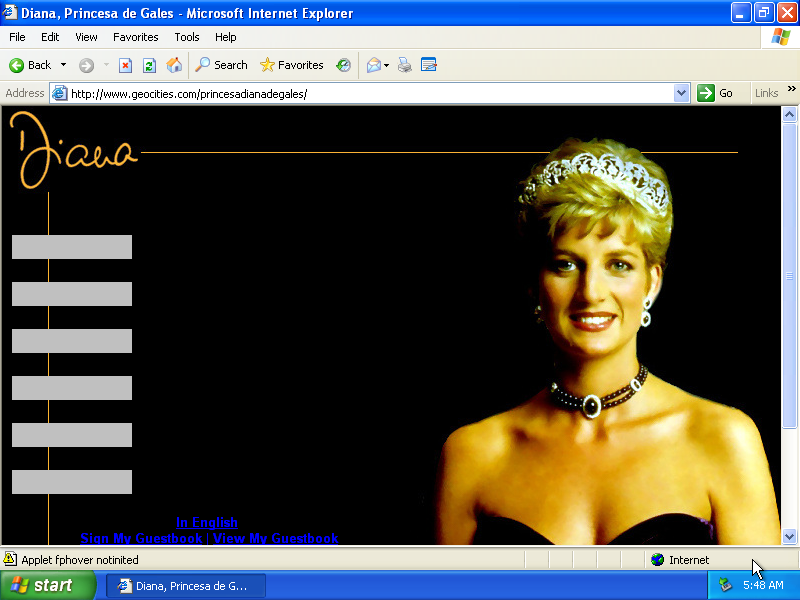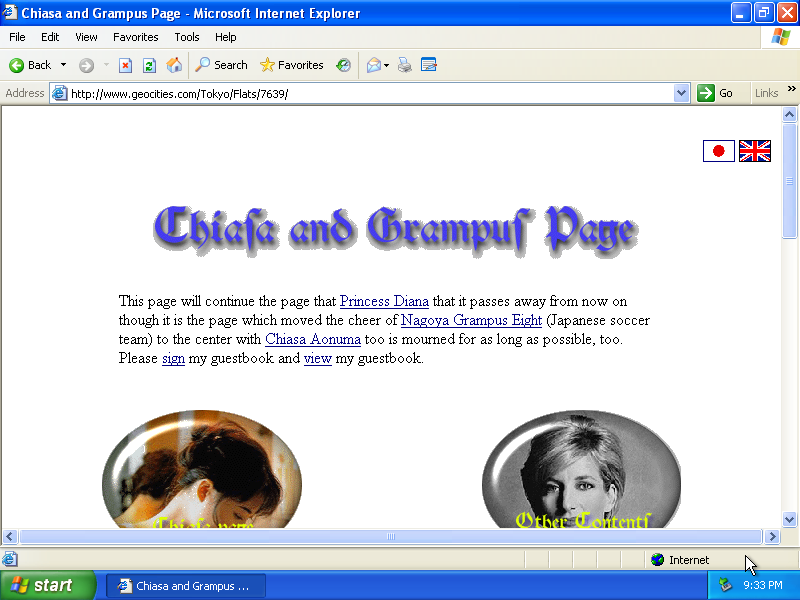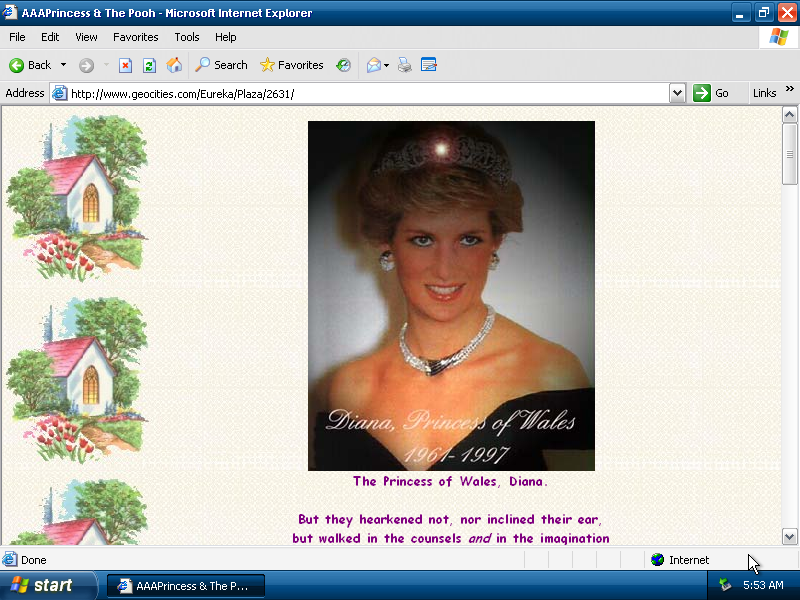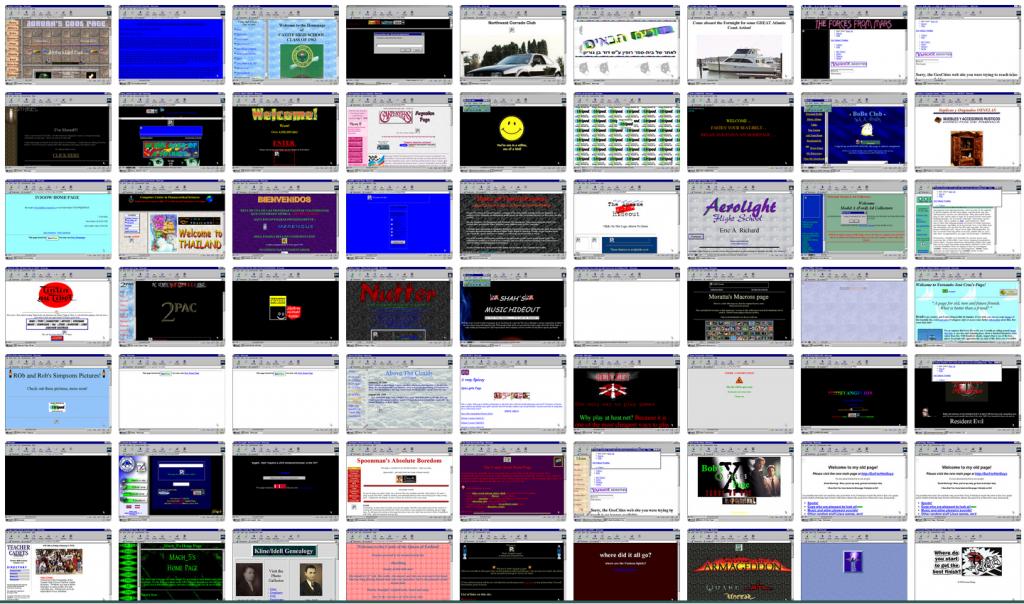To celebrate one year of our Geocities screenshot tumblr One Terabyte of Kilobyte Age Photo Op I restored the top 3 reblogged and liked home pages posted there, as tracked by Olia.
The access has been optimized for contemporary browsers and high interactivity. On the Authenticity/Access chart, this restoration is placed in between “screenshots” and “HTTP mirror access, contemporary, browser AddOn”: The pixels generated by contemporary browsers are not be the same as the ones rendered by a 1997/98 browser, the URLs are not the original ones; however, the interactivity comes close to the original, the graphics look fine enough and are animated. As a bonus, a first time in website restoration, the embedded MIDI files have been transformed into audio recordings using timidity and a Soundblaster AWE32 instrument set.
All material except the counter image was present in the ArchiveTeam’s Geocities torrent distribution. The missing image icq.JPG probably never was uploaded by the user, it is not present on any public Geocities mirror.
The counter image  was lifted from the Wayback Machine. The original URL http://www.geocities.com/cgi-bin/counter was probably working with browser referrer information to assign the counter to a certain web page. The Internet Archive’s web crawler saved the counter showing 0000 over a few years. We will not be able to reconstruct the number of visitors to the page, but at least we can imagine how it looked.
was lifted from the Wayback Machine. The original URL http://www.geocities.com/cgi-bin/counter was probably working with browser referrer information to assign the counter to a certain web page. The Internet Archive’s web crawler saved the counter showing 0000 over a few years. We will not be able to reconstruct the number of visitors to the page, but at least we can imagine how it looked.
The MIDI file embedded in the page, a version of Celine Dion’s “My Heart Will Go On”, is heavily damaged and produces strange noises when played back via timidity. I haven’t verified how it would be interpreted on a legacy system, but since the MIDI file specification is not met in this file it will for sure not reproduce a perfect version of the song. (The file is damaged or not present in all public mirrors of Geocities.)
This simple home page posed no further problems, “As Long As You Love Me” by the Backstreet boys was conserved in a perfect MIDI version. The missing image devlayy.jpg never left the author’s hard disk, it is referenced outside of the homepage’s root directory in a folder called Annies GirlClub.
From Divorced Dads, the ArchiveTeam’s copy only contains the main page. I took some missing pages and  from reocities. The downside of reocities is that there is no Last-Modified header delivered from the server, the upside is that the original HTML is less modified than on the wayback machine. Thankfully the wayback machine delivers original Last-Modified dates in extra HTTP headers, so I was able to transfer this metadata to the reocities copies.
from reocities. The downside of reocities is that there is no Last-Modified header delivered from the server, the upside is that the original HTML is less modified than on the wayback machine. Thankfully the wayback machine delivers original Last-Modified dates in extra HTTP headers, so I was able to transfer this metadata to the reocities copies.
The banner on the bottom was replaced with a generic banner ad from this particular banner exchange service from 2003, as found on the wayback machine.
The top of the page features a Java applet called “GeoGuide” that is referenced on many Geocities home pages. Unfortunately, Java applets have posed issues for webcrawler-based archiving, since they are opaque blobs of code that might load further resources, for example images or object code libraries. Most crawlers wouldn’t even download the applet files because of the low likeliness that they would work later. There is no public mirror of Geocities available that contains this applet, and until now no screenshot or other form of documentation of GeoGuide was found.
The counter  used to be delivered from a personalized URL, http://www.geocities.com/cgi-bin/counter/jacquestheman, the first time it was checked on the wayback machine in 2003 was already producing a “file not found”. Since Geocities moved their user tracking to a separate server visit.geocities.com, I decided to look there and indeed found four zeroes printed in a nice font, still alive. This might be the counter the page’s author customized for himself, or it might not be.
used to be delivered from a personalized URL, http://www.geocities.com/cgi-bin/counter/jacquestheman, the first time it was checked on the wayback machine in 2003 was already producing a “file not found”. Since Geocities moved their user tracking to a separate server visit.geocities.com, I decided to look there and indeed found four zeroes printed in a nice font, still alive. This might be the counter the page’s author customized for himself, or it might not be.
All sub pages use a non-standard font called “Paramount” <FONT FACE="Paramount">. A metadata tag <META NAME="GENERATOR" CONTENT="Mozilla/4.01 [en] (Win95; I) [Netscape]"> hints towards Windows 95 being the platform the pages were created on, but there is no information available about what this font might be: There are some freeware fonts with that name, but no font of such a name was ever included in for example the “Microsoft Plus” packs for Windows that gave users extra features and fonts; Microsoft Office never shipped with a Paramount as well. Since the choice of font would be too arbitrary and the likeliness of page visitors having exactly this font installed in 1997/98 to actually see it is very low, I decided to leave the browser’s default font in place.
Enjoy!
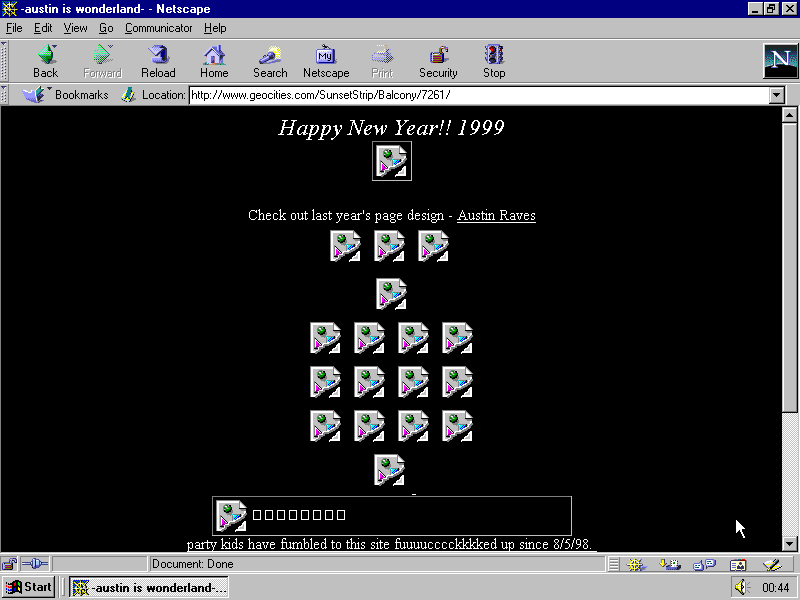
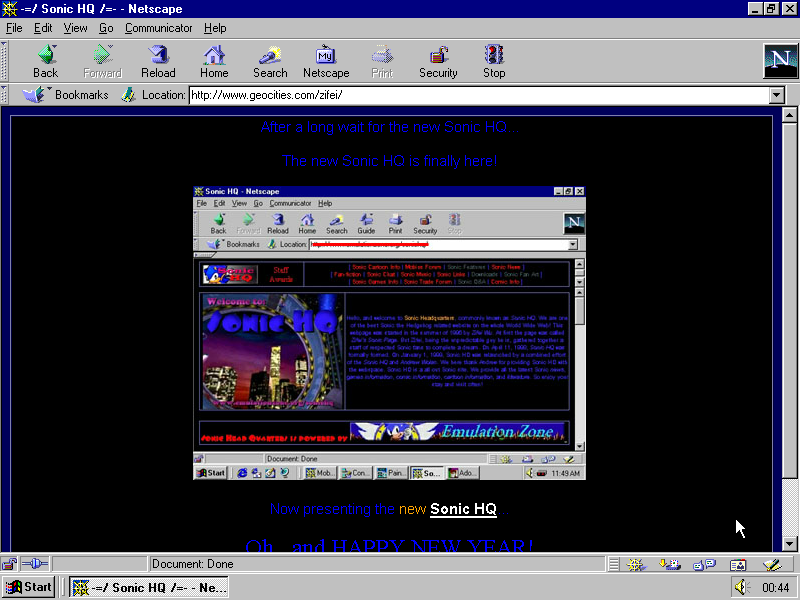
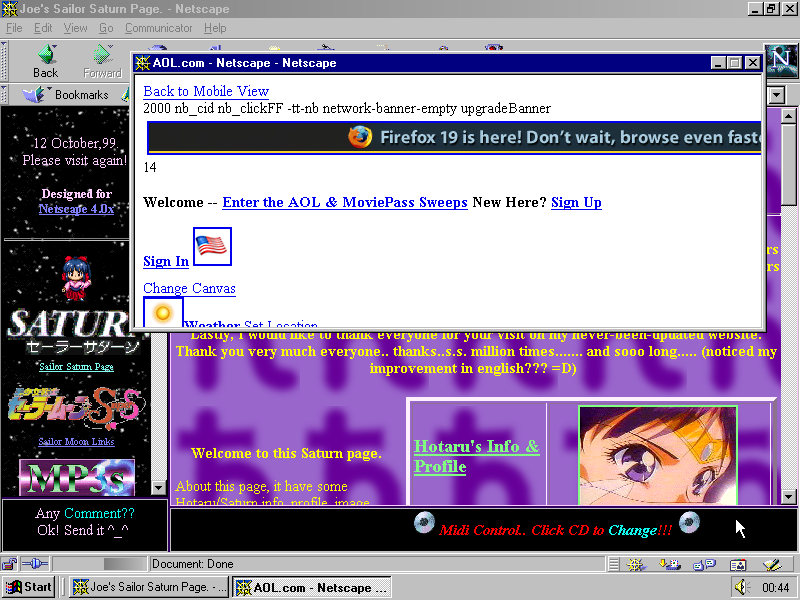
 As you may remember one of the most exciting facts about the dancing girl GIF is that there is a blinking pixel next to her left leg. It was forgotten there by it’s author Chuck Pointer. If you can’t see it on the original, look at the contemporary reenactment
As you may remember one of the most exciting facts about the dancing girl GIF is that there is a blinking pixel next to her left leg. It was forgotten there by it’s author Chuck Pointer. If you can’t see it on the original, look at the contemporary reenactment